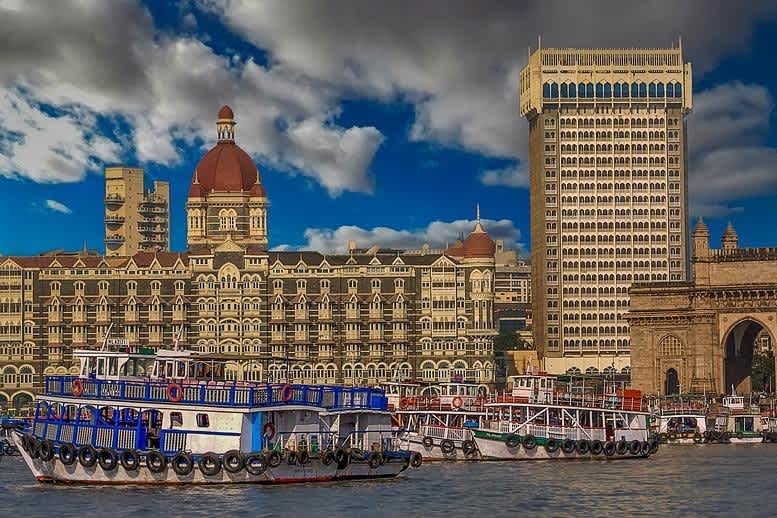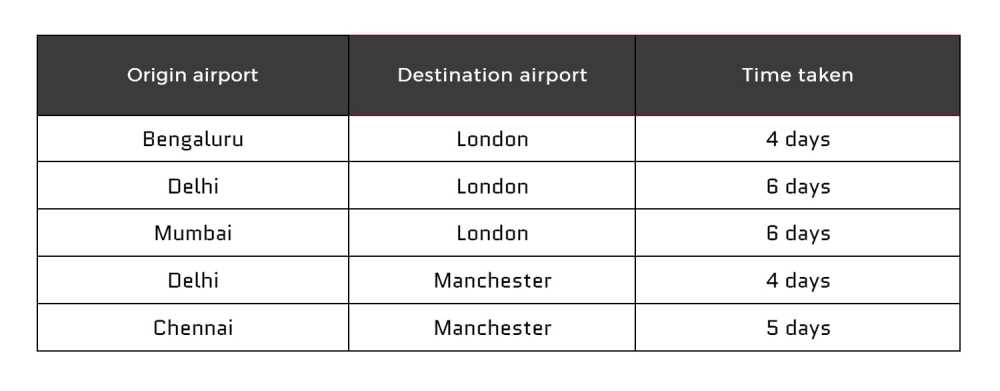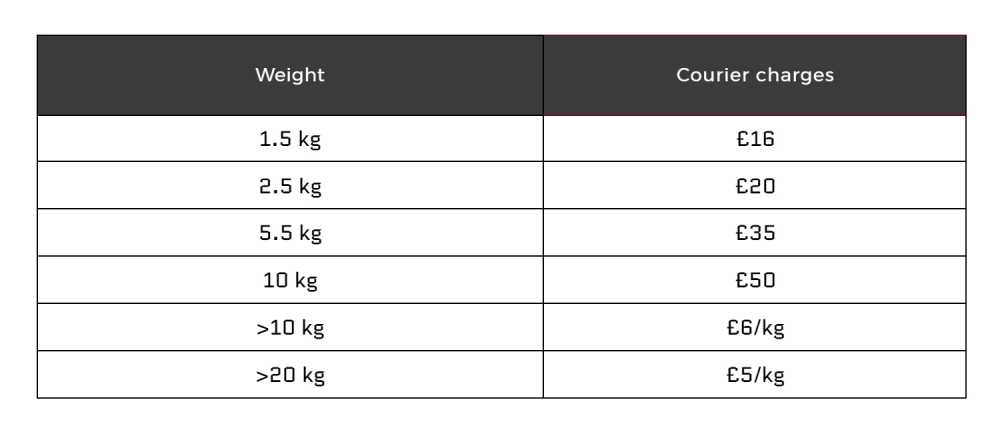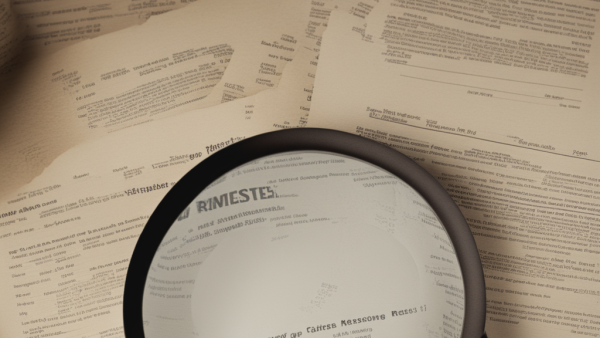
by Sam Franklin | August 17, 2022 | 12 min read
The comprehensive guide to shipping from India to the UK
Get fundedLast updated: September 03, 2022
India and the United Kingdom (UK) have deep historical and strategic ties; both countries have also been trading partners for a long time. India is, in fact, the UK’s 12th largest trading partner, and the two countries are currently negotiating a Free Trade Agreement (FTA).
The total trade in goods and services between the UK and India amounted to £24.3 billion in the financial year 2021. During this time, imports to the UK from India were worth £15.9 billion. Britain imports goods like clothing, pharmaceutical products, textiles, and metals from the South Asian country.
If you are looking to import goods from India and the right mode of transport to do it, we have put together everything you need to know about it in this article. We will talk about sea and air freight between India and the UK, major cargo ports and airports in each country, parcel services, and the costs involved.
Table of contents
- Sea freight from India to the UK
- Air freight services from India to the UK
- International courier services between India and the UK
- Customs duties in the UK
Sea freight from India to the UK
Sea freight is a method of transporting goods across large distances using huge cargo ships. Compared with other modes, it is economical and sustainable. Sea freight accounts for the transport of approximately 90% of goods that are shipped around the globe. If you have a large amount of cargo that you need to ship from India to the UK, sea freight is a suitable option.
For sea freight, you will first want to know how far the closest port is to you and your supplier in India. Let’s begin with a list of major ports in India and important information about them.
If you are curious about freight transport, you can access more information here.
Mundra Port, Gujarat Located on the western coast of India in Gujarat state, the Mundra port is the country’s largest commercial port. In the financial year 2022, it handled 6.5 million twenty-foot equivalent units (TEUs), the standard measure for freight container volume. Owned and managed by India’s largest private port operator Adani Ports and Special Economic Zone Limited (APSEZ Ltd.), Mundra port’s four container terminals have a combined capacity of 7.5 million TEUs. More than 35 shipping services operate from the port covering major global trade lanes.
Jawaharlal Nehru Port Trust – Nhava Sheva (JNPA), Navi Mumbai, Maharashtra JNPA in Navi Mumbai in the western state of Maharashtra is a government owned-port that accounts for almost 50% of the total containerised cargo volume across major ports in India. It operates five container terminals, including a shallow water berth for general cargo and a liquid cargo terminal. It is also developing a satellite port in Vadhvan in the Palghar district of Maharashtra and four dry ports. JNPA recorded container traffic of 5.63 million TEUs in 2021.
Port of Chennai, Tamil Nadu Located on India’s southeastern coast in the state of Tamil Nadu, the port of Chennai has three docks, 24 berths with depths in the range of 8.5-16.5 metres. The port runs its own railway operations inside the harbour and handles a variety of cargo, including food grains, dry bulk, and granite, etc. In the financial year 2022, it handled 48.56 million metric tonnes (MMT) of cargo
Port of Kolkata (Syama Prasad Mookerjee Port), West Bengal Located in the eastern city of Kolkata, the Syama Prasad Mookerjee Port was originally built by the British East India Company. The riverine port is located on the left bank of the Hugli River and is 126 miles away from the sea (Bay of Bengal). It serves the whole of India’s eastern and northeastern regions and the two neighbouring countries - Nepal and Bhutan. In the financial year 2022, the port handled 58.17 million tonnes of cargo.
V. O. Chidambaranar Port, Tuticorin (Thoothukudi), Tamil Nadu Located on the southeast coast of India, the V. O. Chidambaranar Port is well connected by rail and road to major cities in the region and the country. It has two container terminals, and it handled cargo traffic of 34.12 million tonnes in the financial year 2022.
The other important ports in India are:
Port of Kandla (Deendayal Port Trust), Kandla, Gujarat
Port of Mumbai, Mumbai, Maharashtra
Port of Visakhapatnam, Andhra Pradesh
Port of Cochin, Kochi, Kerala
Port of Hazira, Hazira, Gujarat
Port Blair Port, Andaman and Nicobar
Paradip Port, Orissa
Ennore/Kamarajar Port, Tamil Nadu
Ports in the UK
The UK has a well-developed port infrastructure with more than 120 commercial ports. The port industry is dominated by major operators like the Associated British Ports, PD Ports, Forth Ports, Hutchinson Port Holdings, and Peel Group. Here are some of the biggest cargo ports in the UK:
Felixstowe Port
Located in Suffolk, East Anglia, Felixstowe is the UK’s biggest and busiest port for containers. It handles about 4 million TEUs. About 17 shipping lines operate from the port, offering services to more than 700 ports worldwide.
Southampton Port
Southampton is the second-largest container terminal in the country and one of the UK’s busiest deep water ports. It handles about 1.5 million TEUs per year. It is at a distance of about 80 miles from London.
London Gateway Port
Situated on the River Thames, the London Gateway Port is an automated deep-sea container port located on the edge of the capital city. One of its main advantages is its close proximity to distributors and shops in the city of London.
Liverpool Port
The Liverpool port is spread across a 12 km area divided between Liverpool port 1 and port 2. It handles over 900,000 TEUs every year.
Port of Immingham
Managed by the Associated British Ports (ABP), the Port of Immingham is the UK’s largest port by tonnage, handling about 55 million tons of cargo annually.
Looking for a port near you? Here’s our guide to major UK ports.
How long does sea freight take from India to the UK?
Sea freight transit time between India and the UK is approximately 3-6 weeks on average depending on the origin and destination ports. Goods from India arrive at Southampton, London Gateway, Felixstowe, and Tilbury ports.
Here is the approximate time taken by cargo ships to reach some of the ports in the UK from ports in India. The actual time may vary.

LCL vs FCL freight from India to the UK
There are two modes of container shipments available for your goods between India and the UK. You can pick one of the two depending on the type and volume of your cargo:
Less than Container Load (LCL)
If your cargo is not large enough to fill a full 20-feet or 40-feet container, it can be grouped with other shipments. This type of container shipments are called Less than Container Load (LCL) freight. The biggest advantage of LCL freight is that you only pay for the space you use.
Here's what you need to know before choosing LCL shipping:
You only pay for the volume you need unlike full container load or FCL freight where you pay a flat fee.
Even though air freight is faster, LCL is more cost effective for a small amount of goods. You can pick LCL freight if you are not pressed for time.
LCL may be easier to book during peak shipping season.
Full Container Load (FCL)
FCL shipping is when one shipper occupies the whole space in a container. Here are its advantages and disadvantages:
It is more economical for big volumes of cargo
You should use FCL if your shipment is more than 14 cubic metres or occupies more than 10 standard pallets. For this volume of goods, FCL is more cost effective than LCL.
FCL is also suitable if your cargo has a high risk of being damaged. Being shipped in a container alone means that it won't come in contact with other kinds of cargo.
You can read more about container shipping here.
How much does it cost to ship a container from India to the UK?
Sea freight rates vary depending on the items you are shipping, time of the year, the mode of sea shipping you pick, etc. The cost of shipping from India to the UK also depends on the location of the supplier. For example, if your supplier is based in New Delhi, your goods will have to cover a distance of about 1,400 kms by truck to Nhava Sheva or about 1,150 kms to the Mundra port. This will add to the cost of shipping.
Average container shipping rates from India to the UK
Here are the average container shipping rates for the two most common container sizes from India to the UK. These may vary from actual rates.
20-feet shipping container
Dimensions: 5.9m x 2.35m x 2.39m (l x w x h)
Approximate cost of shipping: £3,400 - £3,750
40-feet shipping container
Dimensions: 12.03m x 2.35m x 2.39m (l x w x h)
Approximate cost of shipping: £6,500 - £7,100
Air freight services from India to the UK
Air freight or the transport of goods on an air carrier is a fast way to transport your goods between India and the UK especially if you have a small volume of valuable cargo.
How long does it take to ship cargo by air between India and the UK?
Here is the approximate time air freight takes between some airports in the two countries:

Major cargo airports in India
Here is a list of the main cargo airports in India:
Indira Gandhi International Airport, New Delhi The Indira Gandhi International Airport located in the capital city is the largest cargo airport in South Asia. The airport handled 955,860 metric tonnes of freight at the end of the financial year 2020. The cargo facilities at the Delhi Airport are spread over an area of 150 acres comprising two integrated cargo terminals. It is connected to 75 international and 69 domestic destinations served by 63 air carriers and 17 freighter airlines. You can read more about it here.
Chhatrapati Shivaji Maharaj International Airport Located in India's financial capital Mumbai, Chhatrapati Shivaji Maharaj International Airport is managed by the Adani Group. In the financial year 2022, the airport handled a total of 556,900 metric tonnes (MT) of cargo. You can read more about its cargo services here.
Kempegowda International Airport, Bengaluru Managed by the Bengaluru International Airport Limited (BIAL), a private public Consortium, the Kempegowda International Airport handled the highest-ever cargo tonnage of 411,513 metric tonnes in the financial year 2022.
Chennai International Airport It is located about 21 kilometres southwest of the city centre in Chennai in the southern state of Tamil Nadu. The Chennai International Airport serves the Chennai Metropolitan Area. It is the third busiest airport in the country after Delhi and Mumbai airports.
Netaji Subhas Chandra Bose International Airport, Kolkata One of the busiest airports in India, the Netaji Subhas Chandra Bose International Airport is operated by the Airports Authority of India. It is accessible from the eastern and northeastern regions of the country.
Main cargo airports in the UK
Here are the major UK airports you can consider if you are looking to use air freight for shipping from India to the UK:
Heathrow International Airport Britain's busiest airport, Heathrow, handles over 500,000 tonnes of cargo every year. It manages 32% of all UK goods by value and 70% of the total UK air-cargo trade.
East Midlands International One of Britain's largest pure air cargo airports, East Midlands is an important location for express freight. It handles 440,000 tonnes of cargo annually.
London Stansted Airport One of the UK’s largest cargo airports, it provides easy access to London and the entire South of England and the Midlands. London Stansted handles more than 258,000 tonnes of cargo annually. Its cargo centre has about 55,000 sqm of warehouse and office space.
Manchester Airport The UK’s fourth-largest pure freight airport, Manchester Airport handles more than 120,000 tonnes of freight every year. It offers direct access to the UK’s motorway network.
The other important airports for cargo in the UK are:
Belfast International Airport
London Luton Airport
International courier services between India and the UK
There are a number of parcel shipping options available for international couriers between India and the UK. International courier services are suitable if you have small, boxed items that can be handled and moved without any assistance. Courier services are ideal for shipments that weigh less than about 100 pounds (approximately 45 kgs).
Parcel delivery between India and the UK takes about 4-5 days from Mumbai, but it may take longer from other Indian cities. Major courier companies like DHL, FedEx, DTDC, and TNT express operate between the two countries.
How to prepare your package for courier shipping
You should always pack your parcel items in a sturdy box in bubble wrap or other protective material and secure it with a wide packaging tape. You need to write the name, address, and contact number for the recipient as well as the sender of the parcel. The big advantage of parcel services is that it will be picked up by the courier company from your location. Many companies also offer free packaging services and door-to-door service.
Here are the advantages of using a parcel service between India and the UK:
It is most suitable for small shipments like personal effects or documents.
It's a fast and economical way to ship small amounts of goods.
Couriers are delivered at the recipient's doorstep.
These can be delivered to both residential and office addresses.
Courier service charges between India and the UK
India to the UK courier charges vary depending on the weight, and origin and destination locations. Here is a look at international courier charges based on weight, between India and the UK:
(The rates are not for duty paid services. These don’t include Goods and Services Tax in India (GST), and customs duties in the UK.)

Customs duties in the UK
The UK charges customs duties on all goods imported into the country.
VAT
A value-added tax (VAT) is charged on all goods except gifts worth £39 or less.
Customs Duty
Customs is charged on all goods sent into the UK that are worth more than £135. Non-excise goods worth £135 or less are exempt from customs duty. For gifts above £135-£630, you will be charged 2.5% customs duty. For goods worth more than £135 and gifts above £630, customs duty is dependent on the type of items and their place of origin.
Learn more about UK customs duties here.
Written by

Sam founded his first startup back in 2010 and has since been building startups in the Content Marketing, SEO, eCommerce and SaaS verticals. Sam is a generalist with deep knowledge of lead generation and scaling acquisition and sales.


